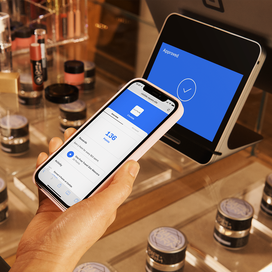Loyal customers quite literally keep your business going. They’re the ones who have stuck with you over the years, they’re your best brand advocates, and they’re the ones who hold you to a high standard. They also tend to be less price sensitive and less expensive to keep as customers. In short, they’re incredibly valuable.
That’s not to say that they think every product you produce and every decision you make is great. On the contrary, these are the people who call you out when they’re unhappy.
So identifying these customers and using data to cultivate your company’s relationship with them is crucial. A survey by McKinsey & Company found significant gains in profits (126%), sales (131%), sales growth (186%), and return on investment (132%) in businesses that made extensive use of customer analytics.
If putting customer data to work can make this much of an impact on performance for corporations, then surely it can move the needle for your small business. Here’s where to find your top customers:
Your data
High-value customers are more than just those who spend a lot of money (but, of course, that’s part of it). So the first place to start looking for loyal customers is in your own data.
Analyze information in your customer relationship management (CRM) system to understand what your customers are buying and when they’re visiting. What is CRM? A CRM like Square’s Customer Directory categorizes customers into groups so it’s easy to see your loyal, casual, or lapsed customers.
You can use this information to develop marketing campaigns personalized for your most faithful customers. You might even develop new products or services based on their purchasing habits.
Feedback
If you aren’t already seeking feedback, it’s time to start. Whether it’s via Yelp or your digital receipts, feedback gives you incredibly valuable insight into what is, or isn’t, working in your business.
But if you pay close attention to who is giving you feedback, it can also be a way to spot your most loyal customers (or those who could become them). The obvious thing to do is to look for glowing praise of your products or services. But you should also look for people who give feedback regularly — this signals that they are relatively engaged with your business. Make sure that you make a note of these engaged customers in your CRM.
The added benefit of feedback is that if you take customers’ advice and act on it, they may be more likely to become loyal customers, if they aren’t already.
Social media
Customers who love your business are likely to engage with it on social media, too. That doesn’t mean they’re the ones who “like” every post you publish.
If you’re interested in mining your social following for loyal customers, use a social media monitoring tool that can show you the people who have followed your brand the longest and are the most engaged (they like, share, comment, or retweet your posts).
You might also use a tool that allows you to engage in social listening. That is, monitor mentions of your brand to get a sense of what people are saying about you.
This is a bit like looking at feedback. Look for the people who are saying great things about your business, but also take note of people who are talking about your business on a regular basis. And don’t forget about the negative messaging — you should answer that when appropriate.
Use this information to tailor messaging and create special offers for these customers on social media.
Your loyalty program
Loyalty programs are mutually beneficial for businesses and customers. As a business owner, you get a deeper insight into spending patterns. Customers get special offers and discounts based on their buying status. It’s a bonus for already loyal customers; it might be an incentive to become more loyal for customers who only come in occasionally.
(It should go without saying that if your loyalty program is no more sophisticated than a punch card, it’s time to digitize.)
Again, a loyalty program just provides another source of data about your customers’ purchasing habits. After seeing how customers use the program, and how many are taking full advantage of it, you might think about creating tiers in your rewards to award elite customers and encourage others to reach that level. For example, elite spenders might get access to certain products before everyone else or get other perks like free shipping.
Finding your loyal customers is incredibly important for any business looking to grow. By recognizing and rewarding your most loyal customers, you encourage their advocacy and they’re more likely to tell their friends and family to frequent your business.
Once you have a handle on where to find your loyal customers — and how you can tell when a customer is loyal — you can start to develop strategies that encourage loyalty from new or less frequent customers.
![]()












